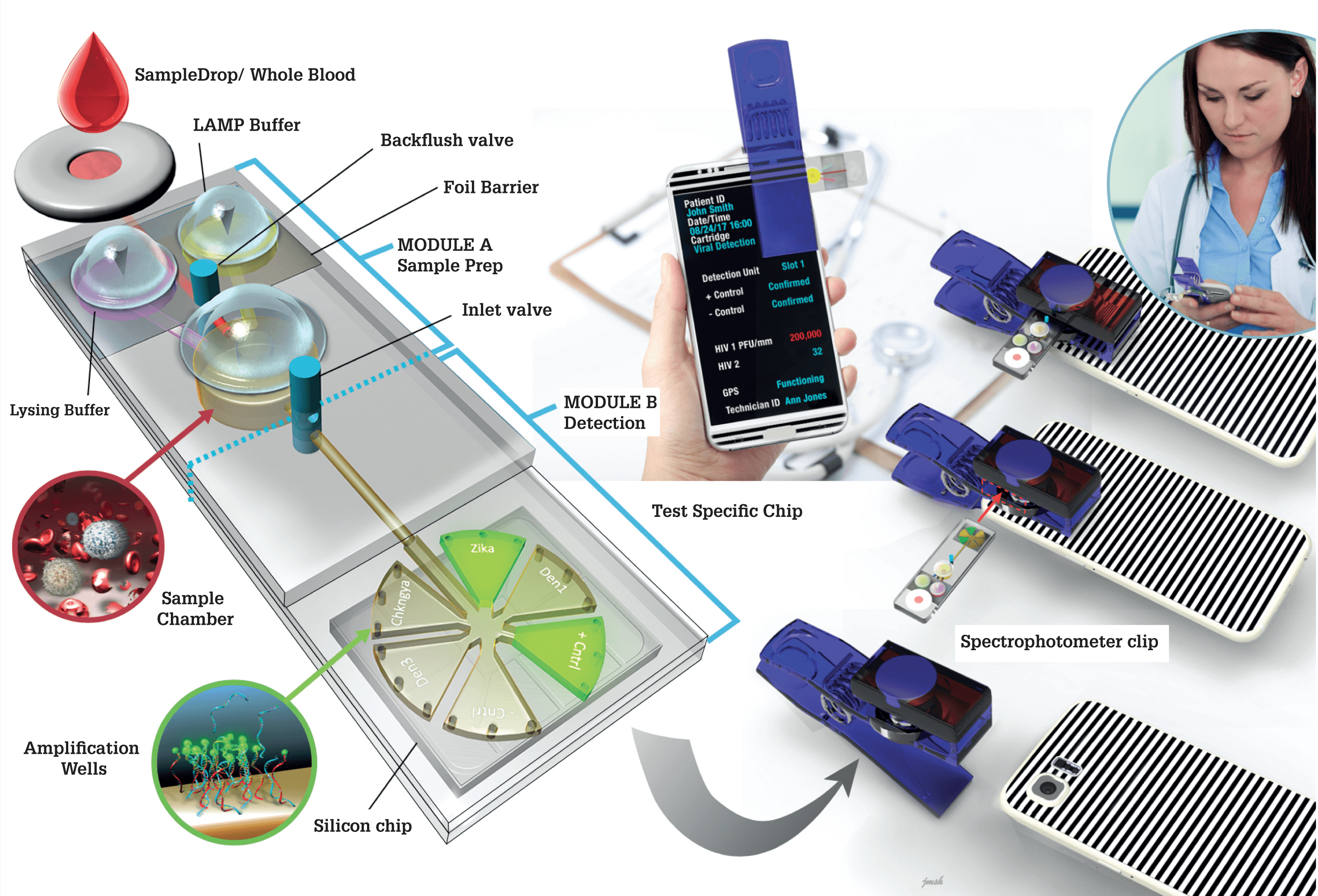
Current point-of-care systems for nucleic acid-based detection of pathogens require highly trained users and results can take days. Now, Brian Cunningham and his team at the University of Illinois have created a smartphone device that can detect viruses and bacteria within 30 minutes in animal trials. If the device works in humans, it could be used for rapid detection of pathogens like SARS-CoV-2.
Within 15 minutes of inserting a nasal swab into the device, the microbe’s RNA is amplified into millions of copies. Fluorescent dye stains these copies and glows green when excited by the blue light from a smartphone, which is then picked up by the camera.

“By using a smartphone for detection, our goal is to make the instrument as low-cost as possible so millions of systems can be deployed,” says Cunningham. “The data can also be shared with healthcare providers so they can more accurately identify trends and perform contact tracing.”
References
- F Sun et al., Lab on a Chip, 20, 1621 (2020). DOI: 10.1039/D0LC00304B
